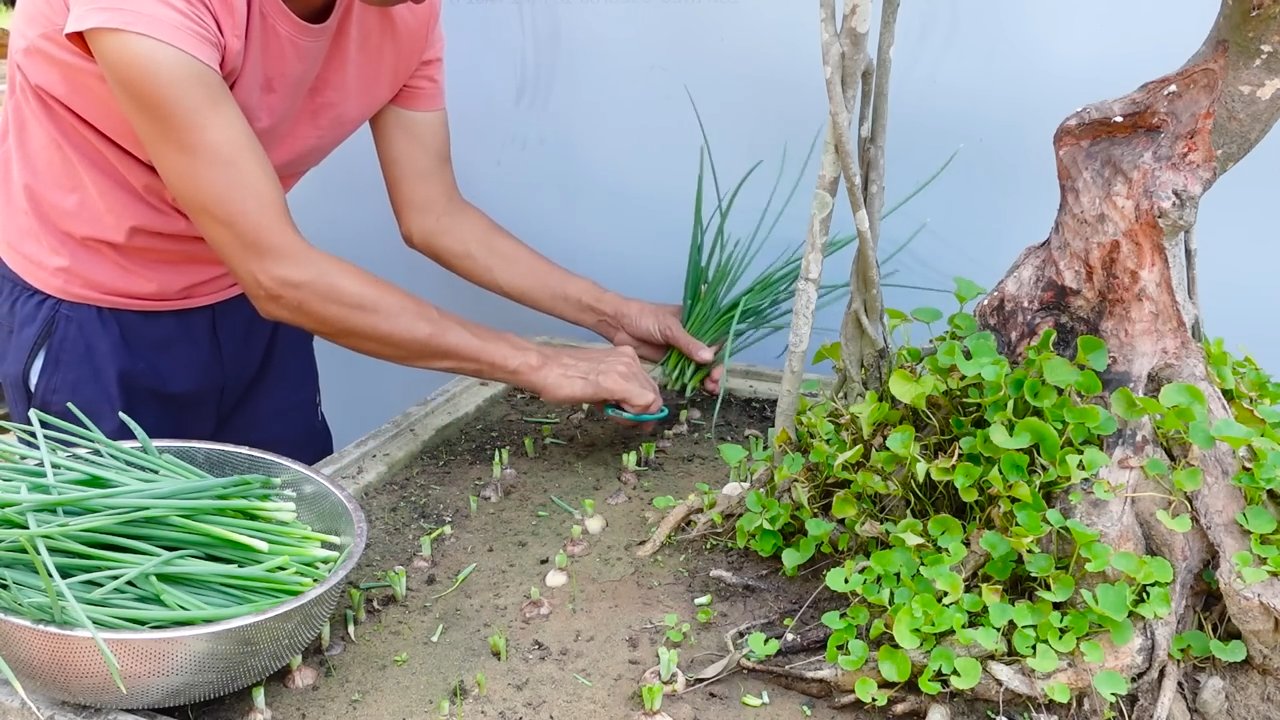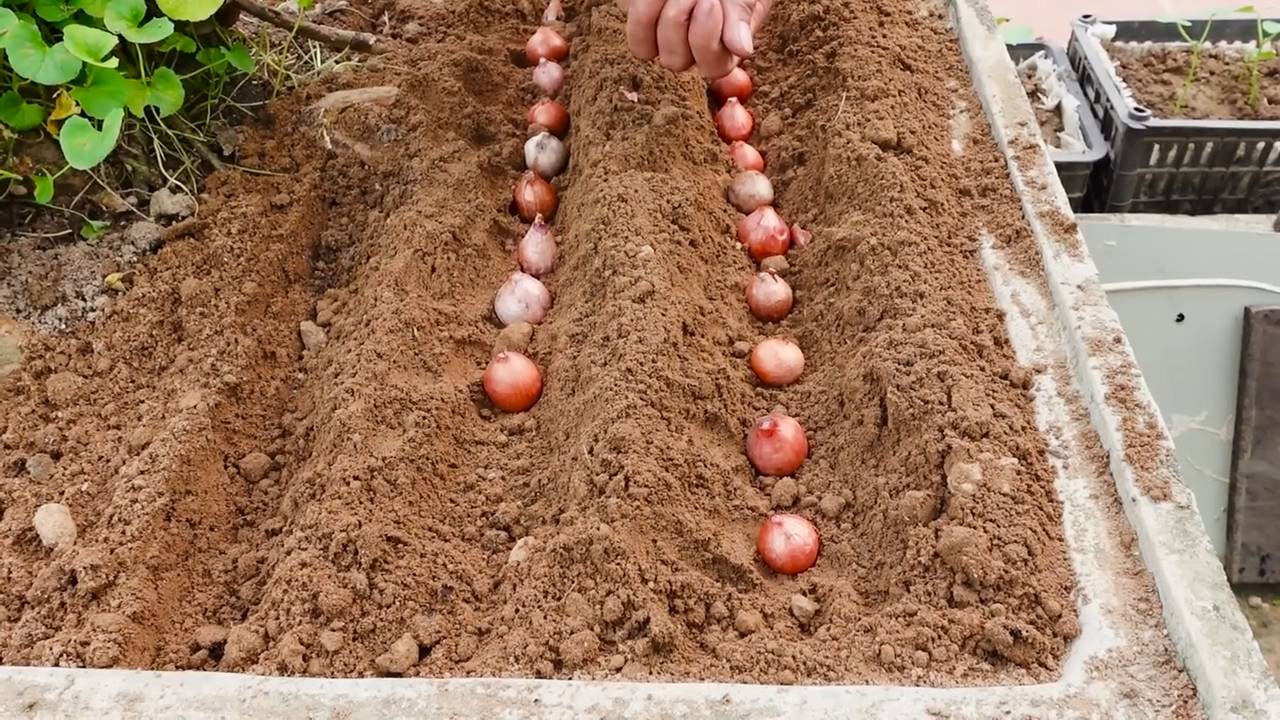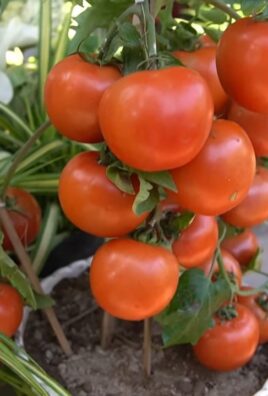Growing green onions indoors has never been easier, and I’m thrilled to share some simple DIY tricks that will have you snipping fresh, flavorful scallions right from your windowsill! Forget those sad, wilted bunches from the grocery store – imagine adding a vibrant, zesty touch to your meals with homegrown green onions, all year round.
For centuries, cultures around the globe have cherished the humble green onion, not just for its culinary versatility but also for its purported health benefits. From Asian stir-fries to Mexican salsas, these little flavor bombs have been a staple ingredient. But what if I told you that you don’t need a sprawling garden to enjoy this culinary delight?
In today’s fast-paced world, convenience is key. We’re all looking for ways to save time and money, and that’s where these DIY hacks come in. Growing green onions indoors is a fantastic way to reduce your grocery bill, minimize food waste, and add a touch of green to your living space. Plus, it’s incredibly rewarding to nurture something from a tiny bulb to a thriving plant. So, let’s dive into these easy-to-follow tips and tricks that will transform your kitchen into a mini-garden!

Growing Green Onions Indoors: A Beginner’s Guide
Hey there, fellow plant enthusiasts! Ever find yourself needing just a sprinkle of green onion for a recipe and dreading a trip to the store? Well, I’ve got the perfect solution: growing your own green onions indoors! It’s surprisingly easy, incredibly rewarding, and a fantastic way to reduce food waste. Plus, fresh green onions are always at your fingertips. Let’s dive in!
What You’ll Need
Before we get started, let’s gather our supplies. This is a pretty low-key project, so you probably already have most of these things lying around.
* Green Onions: The stars of the show! You can use store-bought green onions. Look for ones with healthy, firm bulbs and at least an inch or two of white root ends.
* A Glass or Jar: Any glass or jar will do, as long as it’s tall enough to hold the green onions upright and deep enough to cover the roots with water. A mason jar, a recycled glass container, or even a small vase works great.
* Water: Tap water is perfectly fine.
* Scissors or a Knife: For trimming the green onions.
* Optional: Potting Soil and a Small Pot: If you want to transition your green onions to soil for longer-term growth.
* Optional: Liquid Fertilizer: A diluted liquid fertilizer can give your green onions a boost, but it’s not essential.
Growing Green Onions in Water: Step-by-Step
This is the simplest method, perfect for beginners. You’ll be amazed at how quickly these little guys regrow!
1. Prepare the Green Onions: Take your bunch of green onions and trim off the green tops, leaving about 1-2 inches of green attached to the white bulb and root end. Don’t throw away the green tops! You can use them in your cooking right away. I usually chop them up and add them to salads, soups, or stir-fries.
2. Place in Water: Put the trimmed green onions, root-end down, into your glass or jar. Add enough water to cover the white bulb and the roots, but don’t submerge the entire green portion. You want the green part to stay dry to prevent rotting.
3. Find a Sunny Spot: Place the jar in a bright, sunny location. A windowsill that gets at least 4-6 hours of sunlight per day is ideal. If you don’t have a sunny windowsill, you can use a grow light.
4. Change the Water Regularly: This is crucial! Change the water every 1-2 days to prevent bacteria growth and keep the water fresh. This will also help prevent any unpleasant odors.
5. Harvest and Repeat: As the green onions grow, you can harvest the green tops as needed. Simply snip off the amount you want with scissors. The green onions will continue to regrow from the base. You can repeat this process several times before the bulbs start to lose their vigor.
Transitioning to Soil: For Longer-Term Growth
While growing green onions in water is easy and convenient, they won’t last forever in just water. Eventually, the bulbs will deplete their nutrients. To keep your green onions growing strong for longer, you can transition them to soil.
1. Choose a Pot: Select a small pot with drainage holes. The pot should be large enough to accommodate the number of green onion bulbs you want to plant. A 4-6 inch pot is usually sufficient for a few bulbs.
2. Prepare the Soil: Fill the pot with a well-draining potting mix. You can use a general-purpose potting mix or a mix specifically formulated for vegetables.
3. Plant the Green Onions: Gently remove the green onions from the water. Dig small holes in the soil, spacing them about 1-2 inches apart. Plant the green onion bulbs in the holes, burying the white bulb up to the point where the green part begins.
4. Water Thoroughly: After planting, water the soil thoroughly until water drains out of the drainage holes.
5. Find a Sunny Spot: Just like with the water method, place the pot in a bright, sunny location that receives at least 4-6 hours of sunlight per day.
6. Water Regularly: Keep the soil consistently moist, but not soggy. Water when the top inch of soil feels dry to the touch.
7. Fertilize (Optional): To give your green onions a boost, you can fertilize them every 2-4 weeks with a diluted liquid fertilizer. Follow the instructions on the fertilizer package.
8. Harvest and Enjoy: As the green onions grow, you can harvest the green tops as needed. Simply snip off the amount you want with scissors. The green onions will continue to regrow from the base.
Troubleshooting
Even with the best intentions, sometimes things don’t go exactly as planned. Here are a few common issues you might encounter and how to fix them:
* Yellowing Leaves: Yellowing leaves can be a sign of several things, including overwatering, underwatering, or lack of nutrients. Make sure you’re watering properly and consider adding a diluted liquid fertilizer. Also, ensure they are getting enough sunlight.
* Rotting Bulbs: Rotting bulbs are usually caused by overwatering or stagnant water. Make sure you’re changing the water regularly (if growing in water) and that the soil is well-draining (if growing in soil). Remove any affected bulbs immediately to prevent the rot from spreading.
* Slow Growth: Slow growth can be due to insufficient sunlight, lack of nutrients, or cold temperatures. Make sure your green onions are getting enough sunlight and consider fertilizing them. Also, keep them in a relatively warm location.
* Pests: While it’s rare for indoor green onions to be affected by pests, it can happen. If you notice any pests, such as aphids or spider mites, you can try washing them off with a strong stream of water or using an insecticidal soap.
Tips and Tricks for Success
Here are a few extra tips to help you get the most out of your indoor green onion garden:
* Use Filtered Water: While tap water is generally fine, using filtered water can help prevent mineral buildup and keep your green onions healthier.
* Rotate the Bulbs: If you’re growing in water, rotate the bulbs every few days to ensure even growth.
* Don’t Overcrowd: Give your green onions enough space to grow. If you’re planting in soil, don’t overcrowd the pot.
* Succession Planting: To ensure a continuous supply of green onions, start new batches every few weeks.
* Experiment with Varieties: There are many different varieties of green onions, so experiment to find your favorites.
Why Grow Green Onions Indoors?
Besides the convenience of having fresh green onions readily available, there are several other benefits to growing them indoors:
* Reduces Food Waste: Instead of throwing away the root ends of store-bought green onions, you can regrow them and get multiple harvests.
* Saves Money: You’ll save money on groceries by growing your own green onions.
* It’s Fun and Educational: Growing green onions is a fun and educational activity for kids and adults alike.
* Adds Greenery to Your Home: Green onions add a touch of greenery to your home and can brighten up any space.
So, there you have it! Growing green onions indoors is a simple, rewarding, and sustainable way to add fresh flavor to your meals. Give it a try, and I’m sure you’ll be hooked! Happy growing!

Conclusion
So, there you have it! Transforming kitchen scraps into a continuous supply of fresh, flavorful green onions is not only incredibly easy but also remarkably rewarding. This simple DIY trick for growing green onions indoors is a game-changer for anyone looking to reduce food waste, save money, and add a burst of freshness to their meals. Forget those wilted, sad-looking green onions from the grocery store – with just a little water and sunlight, you can have a thriving mini-garden right on your windowsill.
But the benefits extend beyond mere convenience. Think about the satisfaction of nurturing something from virtually nothing. It’s a small act of self-sufficiency that connects you to the natural world, even within the confines of your home. Plus, it’s a fantastic project to do with kids, teaching them about plant life cycles and the importance of sustainability.
Don’t be afraid to experiment with variations! Try using different types of containers – mason jars, repurposed plastic containers, even old mugs can work beautifully. You can also explore different locations in your home to find the spot with the optimal amount of sunlight. Some people find that a south-facing window works best, while others have success with grow lights.
Consider planting your regrown green onions in soil after they’ve established roots in water. This will allow them to grow even larger and produce more flavorful greens. You can even transplant them to an outdoor garden during warmer months for an even more abundant harvest.
The possibilities are endless, and the rewards are plentiful. This DIY project is a testament to the fact that you don’t need a green thumb or a large garden to enjoy fresh, homegrown produce. It’s a simple, sustainable, and satisfying way to enhance your culinary creations.
We wholeheartedly encourage you to give this DIY trick a try. It’s a low-risk, high-reward endeavor that will undoubtedly add a touch of green to your life, both literally and figuratively. Once you’ve experienced the joy of harvesting your own homegrown green onions, you’ll wonder why you didn’t start sooner.
And most importantly, we want to hear about your experience! Share your photos, tips, and variations in the comments below. Let’s create a community of indoor green onion growers and inspire others to embrace this simple yet impactful DIY project. What containers did you use? How long did it take for your green onions to regrow? Did you encounter any challenges? Your insights will be invaluable to others who are just starting out.
So, grab those leftover green onion roots, find a sunny spot, and get ready to enjoy a continuous supply of fresh, flavorful greens. Happy growing!
Frequently Asked Questions (FAQ)
How long does it take for green onions to regrow in water?
Typically, you’ll start to see noticeable regrowth within just a few days. Within a week, you should have a significant amount of new green growth. The rate of growth depends on factors like sunlight, water quality, and the initial health of the green onion roots. Be patient, and you’ll be rewarded with fresh greens in no time.
What’s the best type of container to use for growing green onions indoors?
The beauty of this DIY project is that you can use almost any container that holds water! Mason jars are a popular choice because they’re readily available and aesthetically pleasing. Repurposed plastic containers, such as yogurt tubs or takeout containers, are also excellent options. Even old mugs or glasses can work well. Just make sure the container is clean and stable. The key is to choose a container that allows the roots to be submerged in water while keeping the green tops exposed.
How often should I change the water?
It’s important to change the water every one to two days to prevent bacterial growth and ensure the green onions have access to fresh, oxygenated water. Stale water can lead to rot and hinder growth. When you change the water, gently rinse the roots to remove any debris.
Do green onions need direct sunlight to regrow?
While green onions don’t necessarily need direct sunlight, they do thrive in bright, indirect light. A spot near a sunny window is ideal. If you don’t have access to a sunny window, you can use a grow light to supplement the natural light. Insufficient light can result in leggy, pale green onions.
Can I grow green onions indoors year-round?
Yes, you can absolutely grow green onions indoors year-round! This is one of the biggest advantages of this DIY project. As long as you provide adequate light and water, you can enjoy a continuous supply of fresh green onions regardless of the season.
How many times can I regrow green onions from the same roots?
You can typically regrow green onions from the same roots several times, usually around 2-3 times. After that, the regrowth may become less vigorous, and the green onions may start to lose their flavor. At that point, it’s best to start with fresh green onion roots.
Can I plant the regrown green onions in soil?
Absolutely! Once the green onions have established roots in water, you can transplant them to soil. This will allow them to grow even larger and produce more flavorful greens. Choose a well-draining potting mix and plant the green onions in a pot or container. You can also transplant them to an outdoor garden during warmer months.
What if my green onions start to turn yellow or brown?
Yellowing or browning leaves can indicate a few different issues. It could be due to insufficient light, poor water quality, or overwatering. Make sure the green onions are getting enough light, change the water regularly, and avoid letting the roots sit in stagnant water. If the problem persists, try adding a diluted liquid fertilizer to the water.
Are there any pests or diseases that affect indoor green onions?
Indoor green onions are generally less susceptible to pests and diseases than outdoor plants. However, they can occasionally be affected by aphids or fungus gnats. If you notice any pests, try washing the green onions with soapy water or using an insecticidal soap. To prevent fungal diseases, ensure good air circulation and avoid overwatering.
Can I use tap water to regrow green onions?
While tap water is generally safe to use, it’s best to let it sit out for a few hours before using it to allow the chlorine to evaporate. Alternatively, you can use filtered water or rainwater.
What are some creative ways to use my homegrown green onions?
The possibilities are endless! Use them as a garnish for soups, salads, and stir-fries. Add them to omelets, quiches, and frittatas. Incorporate them into dips, sauces, and marinades. Use them to flavor rice, noodles, and potatoes. The fresh, vibrant flavor of homegrown green onions will elevate any dish.
Is growing green onions indoors a good project for kids?
Yes, it’s a fantastic project for kids! It’s a simple, hands-on way to teach them about plant life cycles, sustainability, and the importance of growing your own food. Kids will love watching the green onions regrow and harvesting their own fresh greens. It’s also a great way to encourage them to eat their vegetables!




Leave a Comment